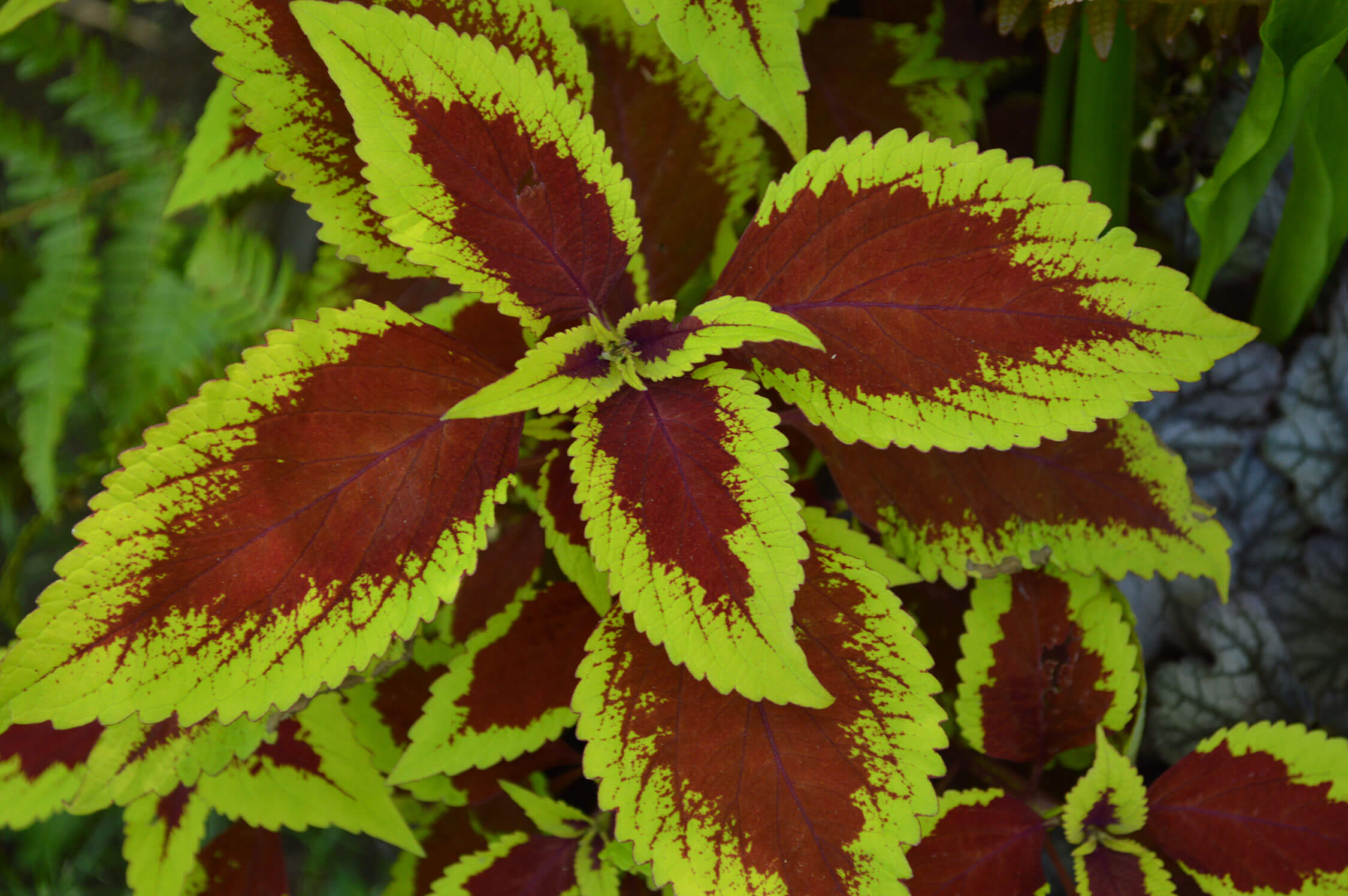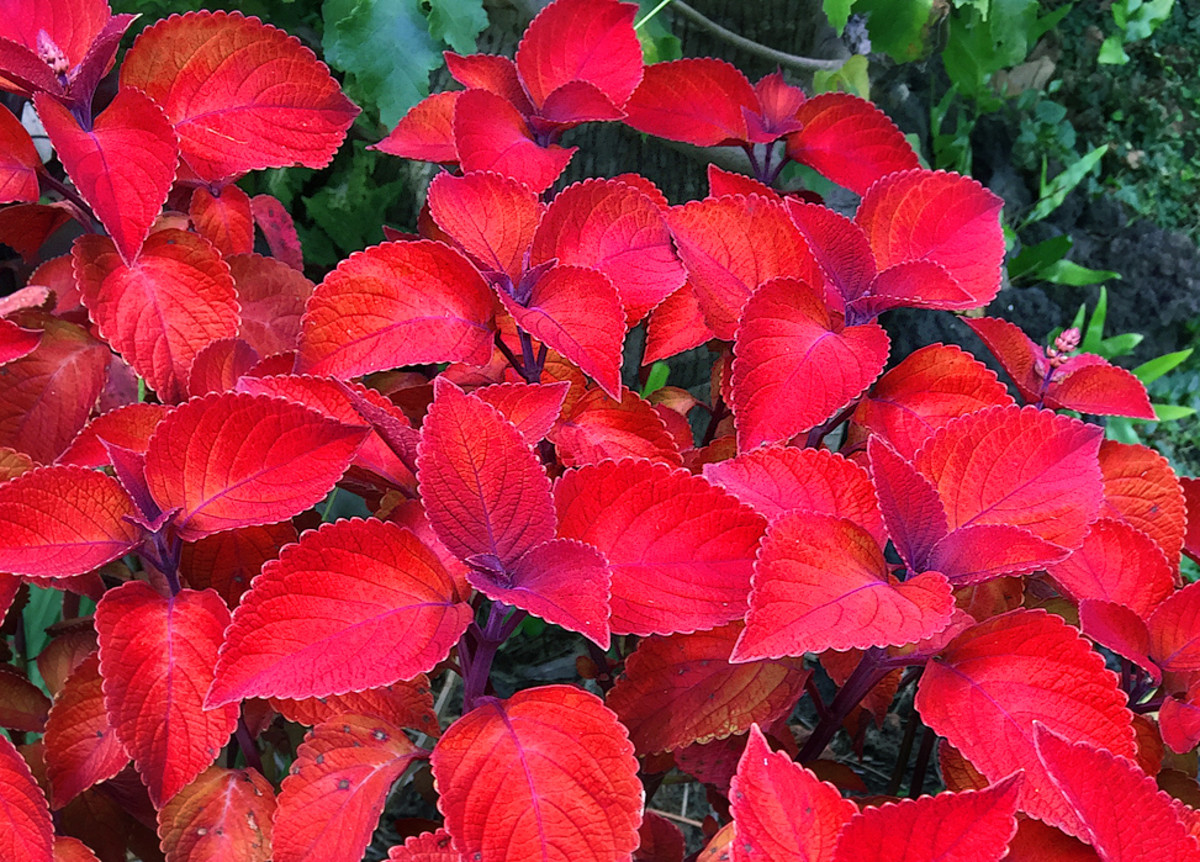Embark on a captivating journey into the realm of plant red green leaves, where vibrant hues and scientific wonders intertwine. Discover the secrets behind their striking colors, explore their ecological significance, and unravel the intricate processes that make them an integral part of our planet’s biodiversity.
From the emerald glow of chlorophyll to the crimson radiance of anthocyanins, plant red green leaves are a testament to nature’s artistry and evolutionary brilliance.
Plant Characteristics

Plants with red and green leaves exhibit a diverse range of physical attributes. The size, shape, and texture of their leaves vary significantly depending on the species and environmental conditions. For instance, some plants like the coleus (Solenostemon scutellarioides) display vibrant red and green leaves with intricate patterns and ruffled edges, while others such as the Japanese maple (Acer palmatum) showcase stunning shades of crimson and emerald during autumn.
Environmental factors play a crucial role in determining leaf color. Sunlight, temperature, and nutrient availability can influence the production of pigments that give leaves their characteristic hues. Chlorophyll, the green pigment responsible for photosynthesis, is produced in abundance when plants receive adequate sunlight. In contrast, anthocyanins, the pigments responsible for red and purple colors, are synthesized in response to various environmental cues, including exposure to high levels of ultraviolet radiation, cold temperatures, or nutrient deficiencies.
Examples of Plant Species with Distinctive Red and Green Leaf Patterns
- Coleus (Solenostemon scutellarioides): Known for its vibrant red and green leaves with intricate patterns and ruffled edges.
- Japanese maple (Acer palmatum): Showcases stunning shades of crimson and emerald during autumn.
- Poinsettia (Euphorbia pulcherrima): Features bright red bracts that resemble leaves, creating a festive display during the holiday season.
- Rex begonia (Begonia rex): Boasts a wide variety of leaf shapes and colors, including red and green patterns.
- Caladium (Caladium bicolor): Displays large, heart-shaped leaves with vibrant red and green patterns.
Photosynthesis and Pigments

Photosynthesis is the process by which plants use sunlight, carbon dioxide, and water to create glucose (sugar) and oxygen. The green color of leaves is due to the presence of chlorophyll, a pigment that absorbs blue and red light and reflects green light. Chlorophyll is essential for photosynthesis, as it captures the light energy needed to convert carbon dioxide and water into glucose.
Other Pigments
In addition to chlorophyll, leaves also contain other pigments, such as carotenoids and anthocyanins. Carotenoids are yellow, orange, and red pigments that absorb blue and green light and reflect yellow, orange, and red light. Anthocyanins are red, purple, and blue pigments that absorb green and yellow light and reflect red, purple, and blue light.
Red Pigments and Photosynthesis
The presence of red pigments in leaves can affect the efficiency of photosynthesis. Red pigments absorb blue and green light, which are the wavelengths of light that are most efficiently used by chlorophyll for photosynthesis. As a result, leaves with high levels of red pigments may have reduced photosynthetic efficiency compared to leaves with low levels of red pigments.
Ecological Significance: Plant Red Green Leaves

Red and green leaves are ecologically significant for plants as they play crucial roles in survival, adaptation, and ecosystem dynamics. These leaf colors result from the presence of various pigments, primarily chlorophyll and carotenoids, which serve specific functions.
Pollinator Attraction
Many flowering plants produce red leaves to attract pollinators, such as birds, bees, and butterflies. Red petals and leaves are often associated with nectar production, signaling a potential food source for pollinators. By attracting pollinators, plants ensure successful reproduction and genetic diversity.
Herbivore Deterrence, Plant red green leaves
Red leaves can also deter herbivores, such as insects and deer. The bright color may indicate the presence of secondary compounds, which are often toxic or unpalatable to animals. By deterring herbivores, plants can protect their leaves and maximize photosynthetic potential.
Camouflage and Crypsis
In some cases, green leaves provide camouflage, allowing plants to blend in with their surroundings and avoid detection by predators. This is particularly important for plants living in dense vegetation or understory environments.
Biodiversity and Ecosystem Dynamics
The variation in leaf color contributes to biodiversity and ecosystem dynamics. Different plant species have evolved distinct leaf colors to adapt to specific ecological niches and attract specific pollinators or deter specific herbivores. This diversity enhances the complexity and stability of ecosystems.